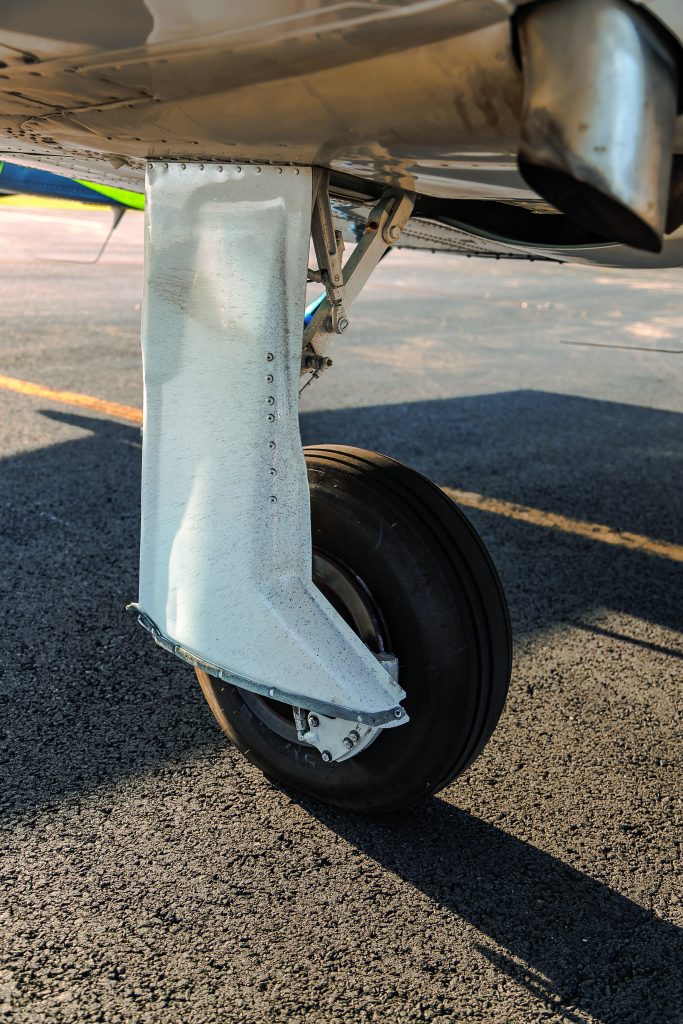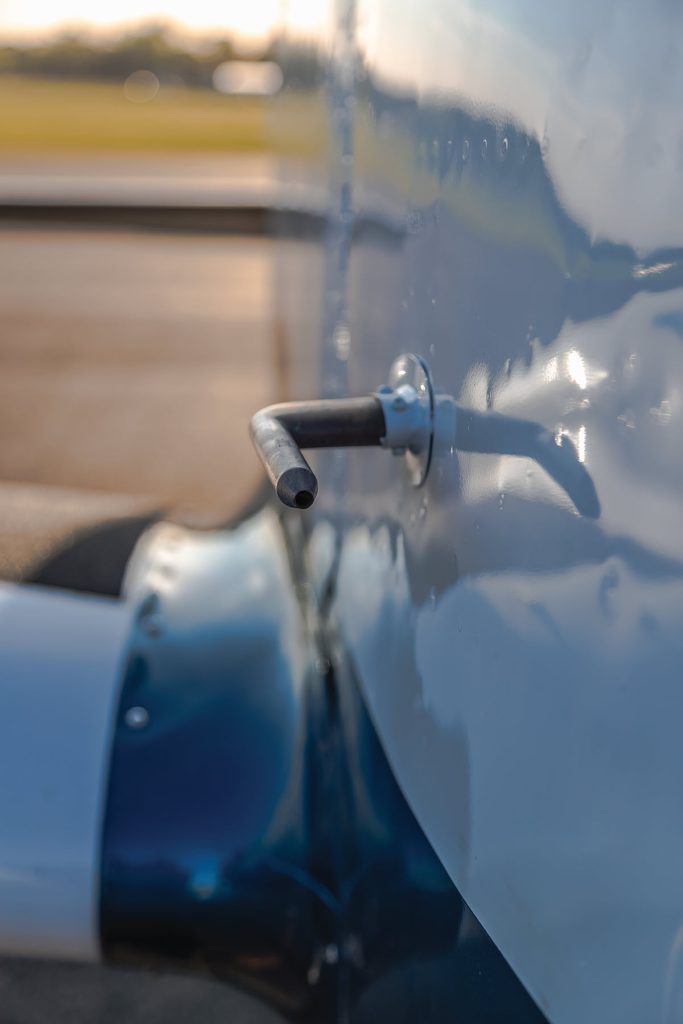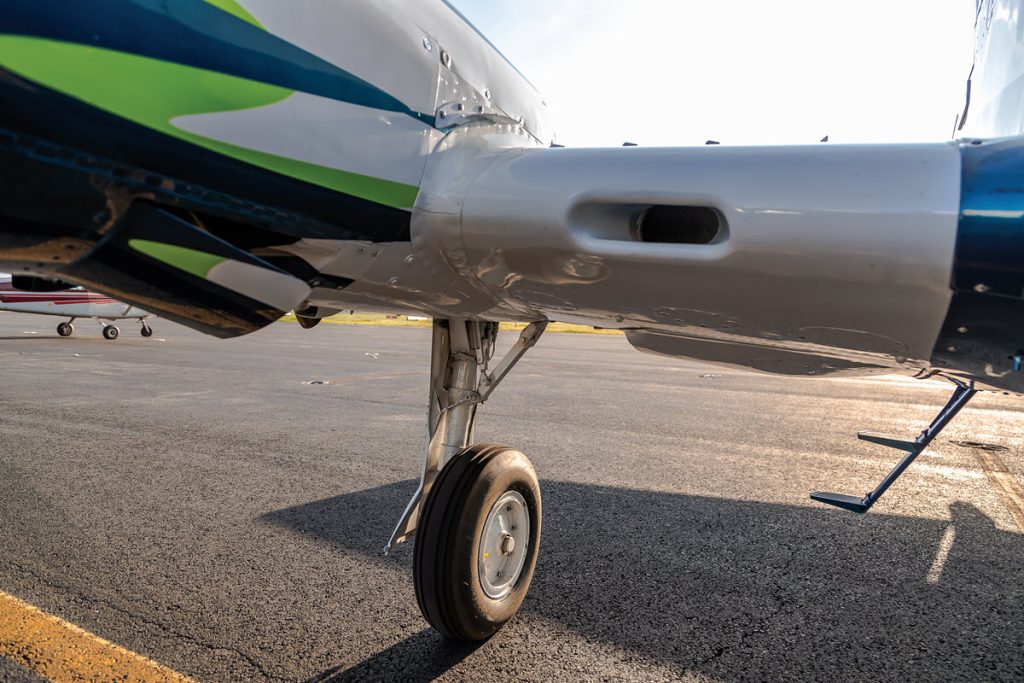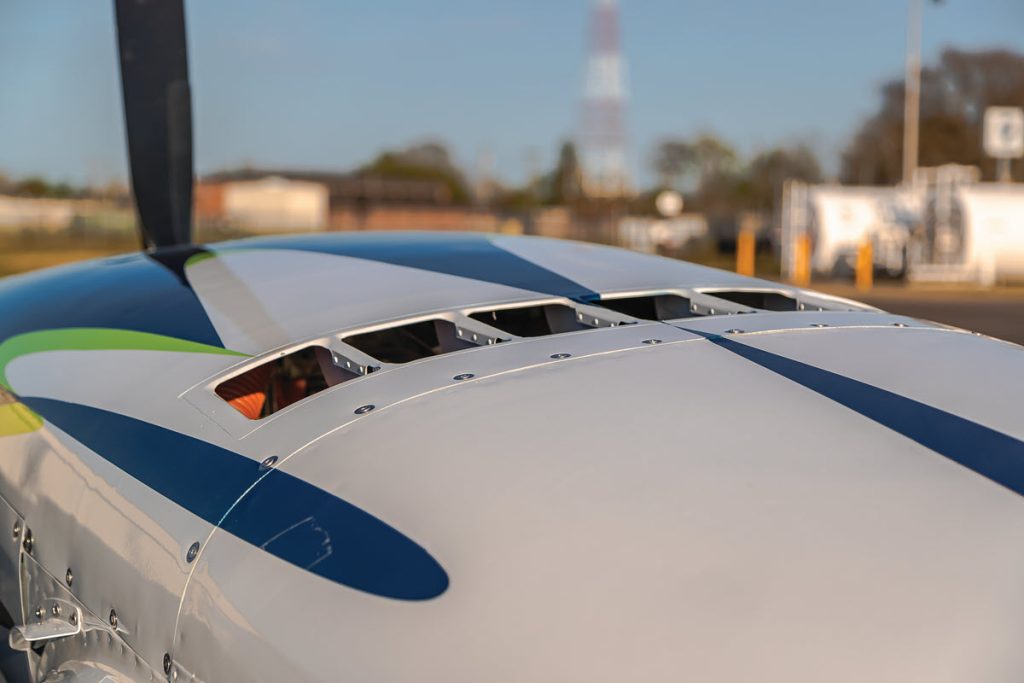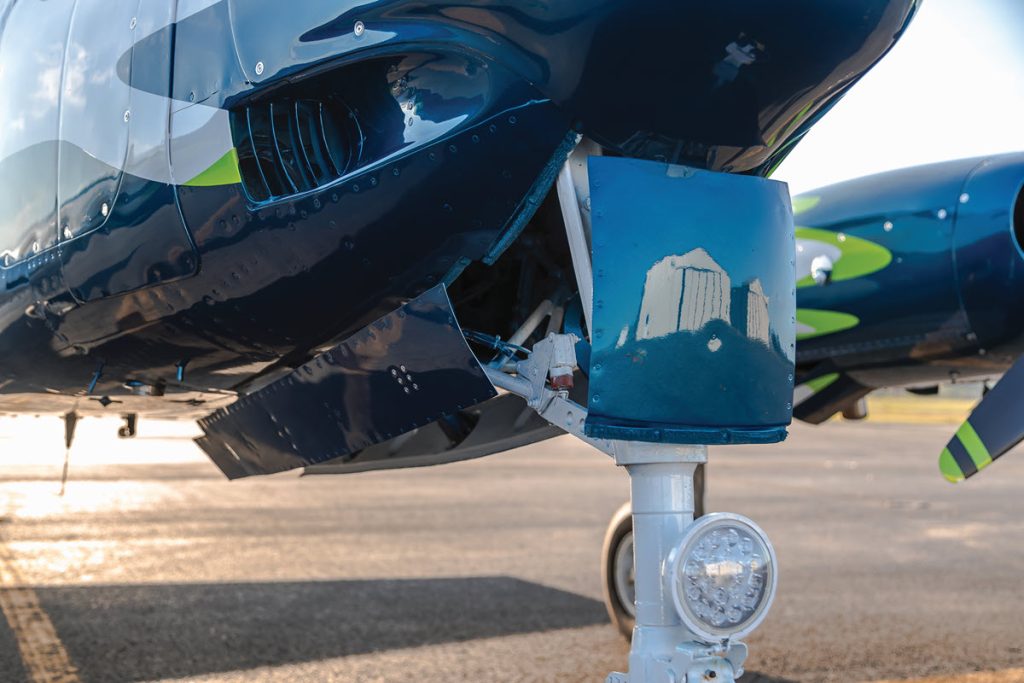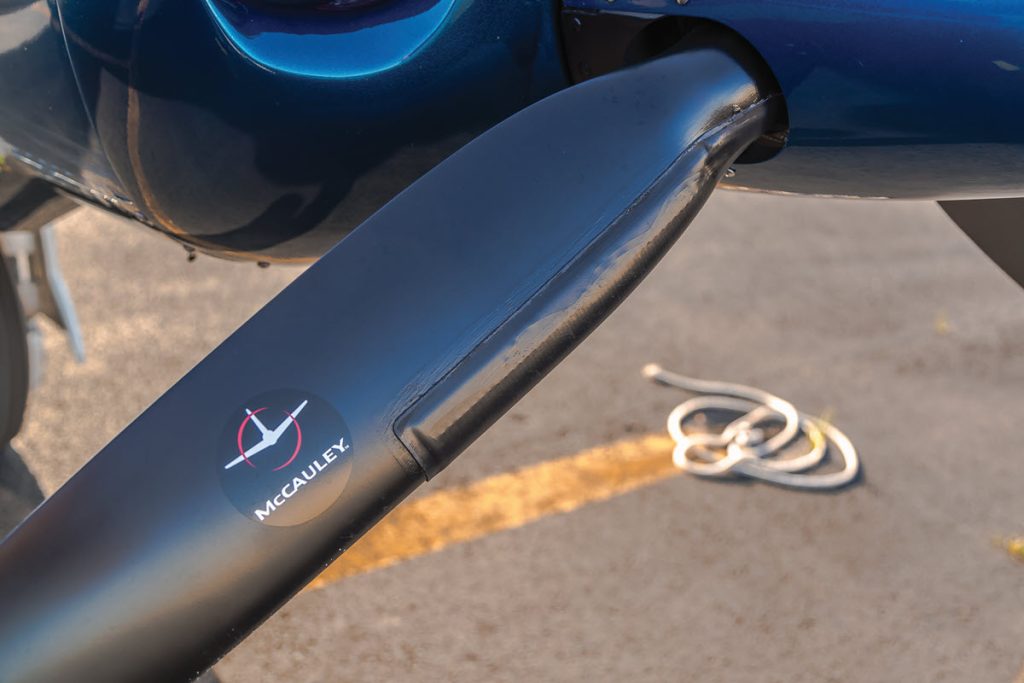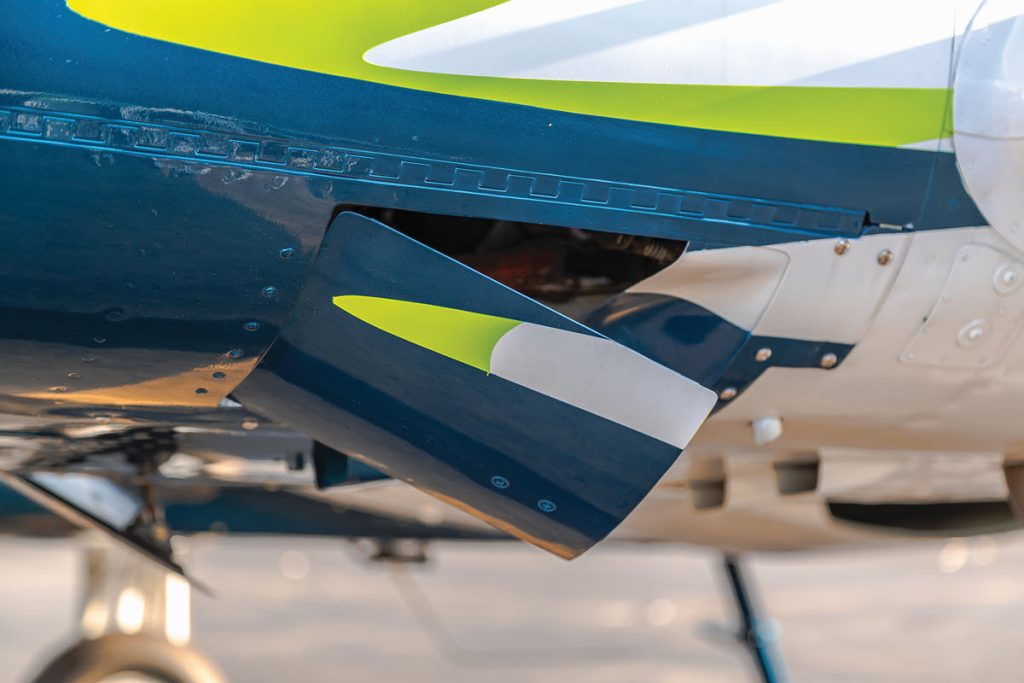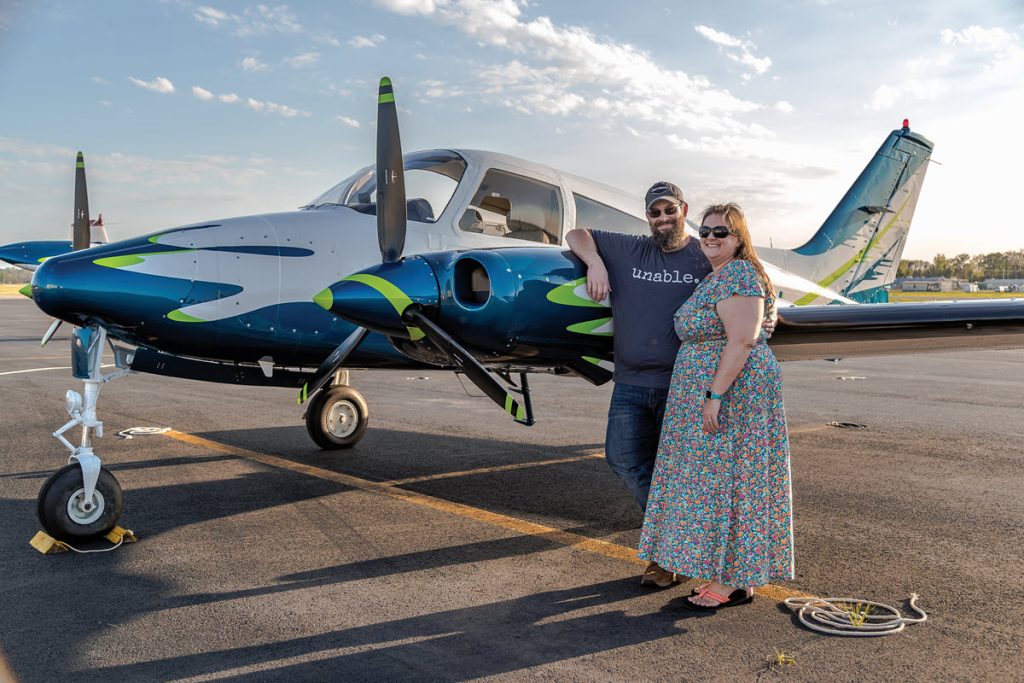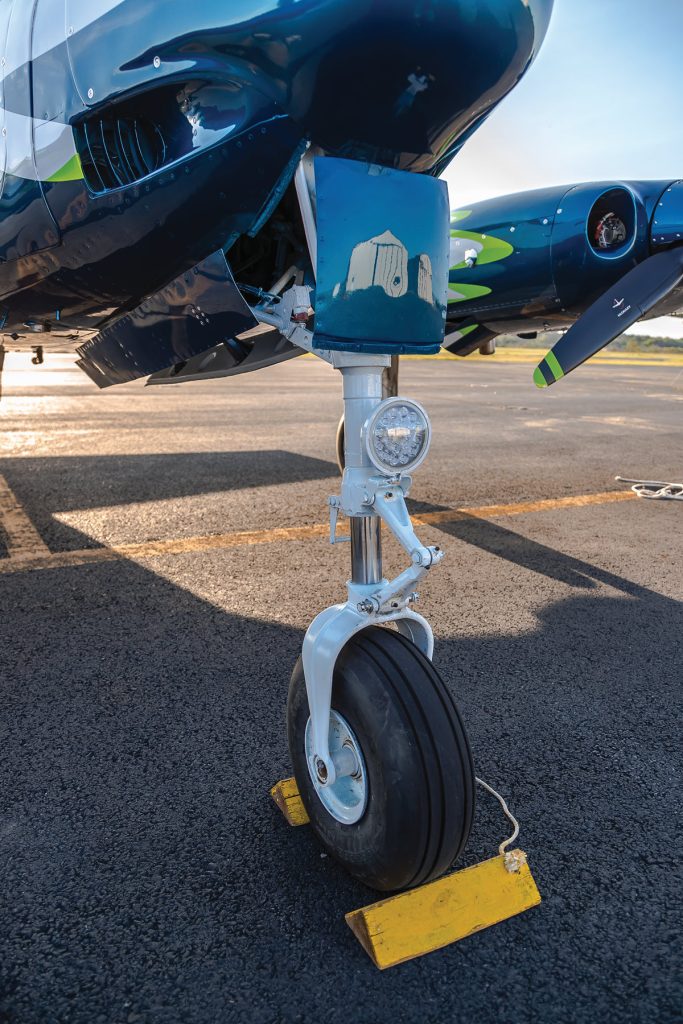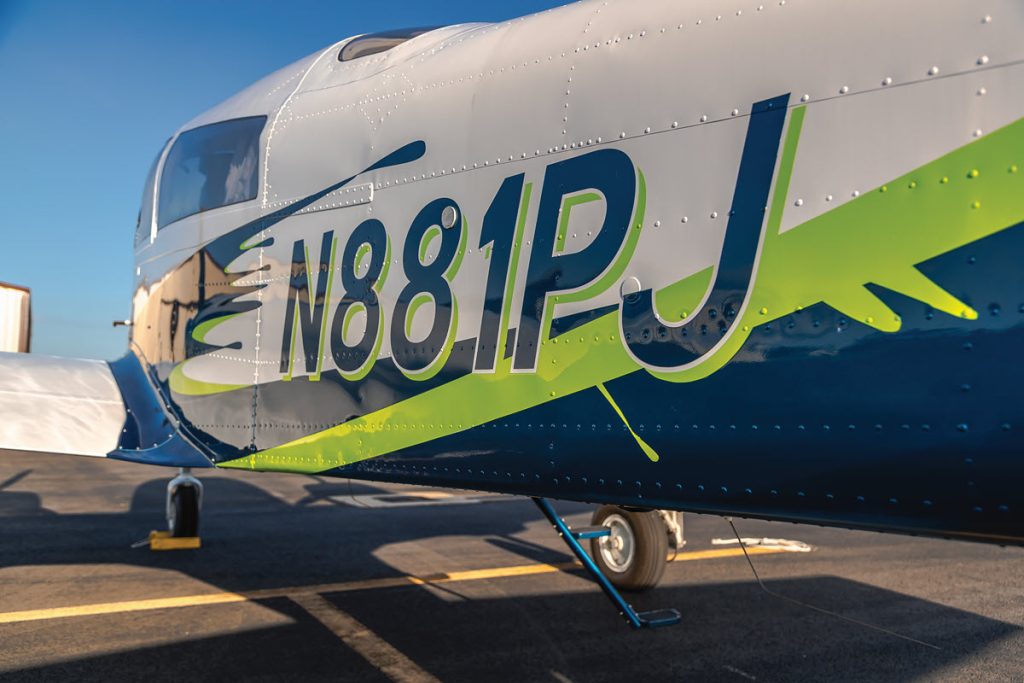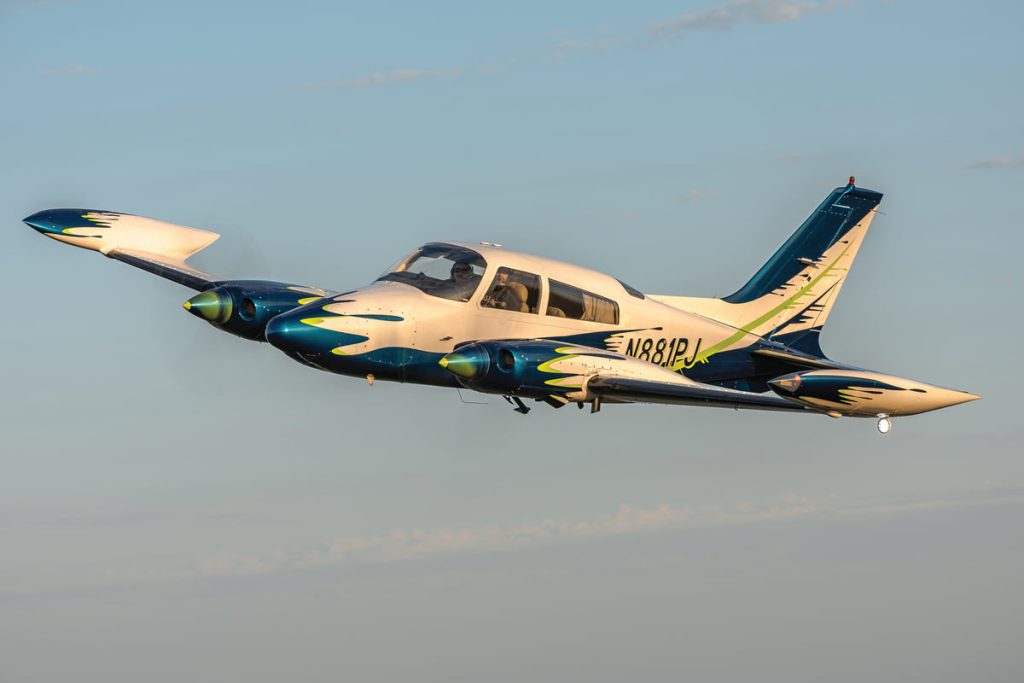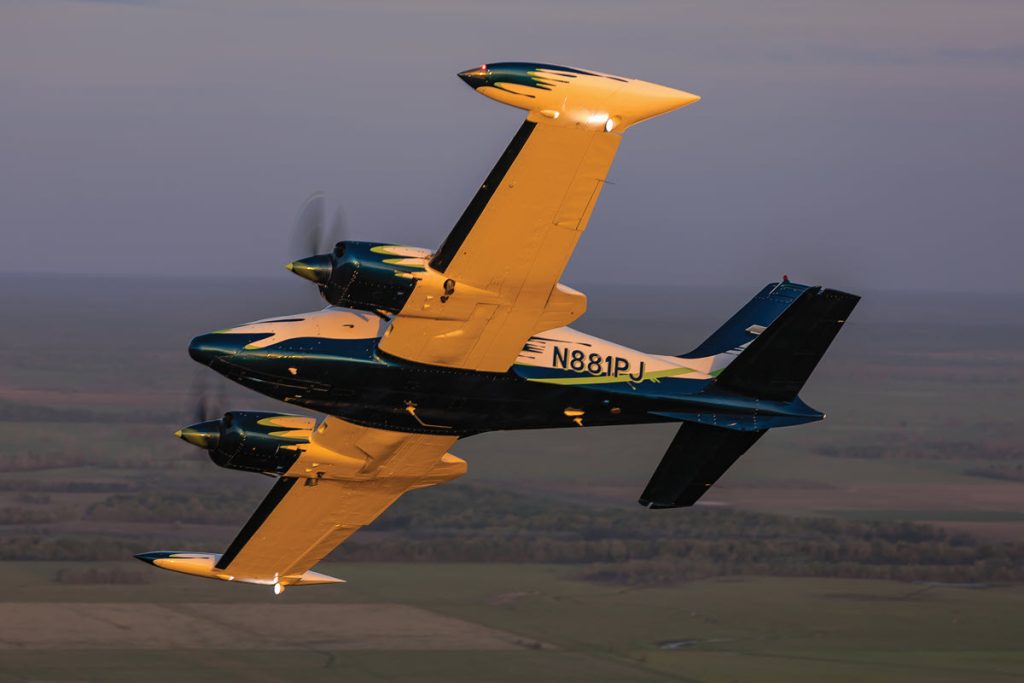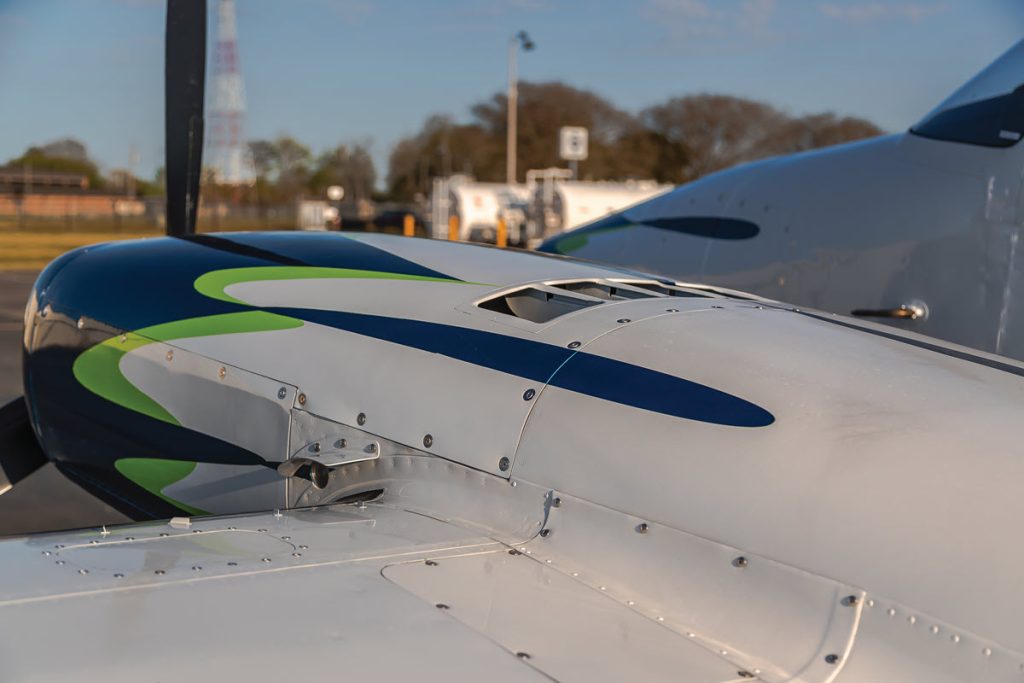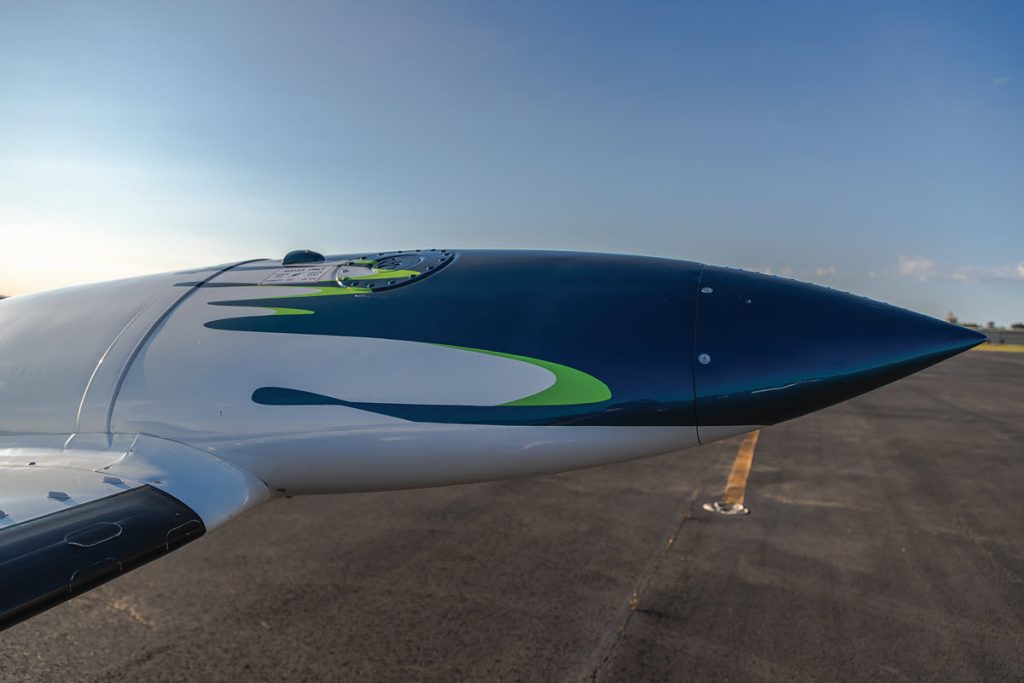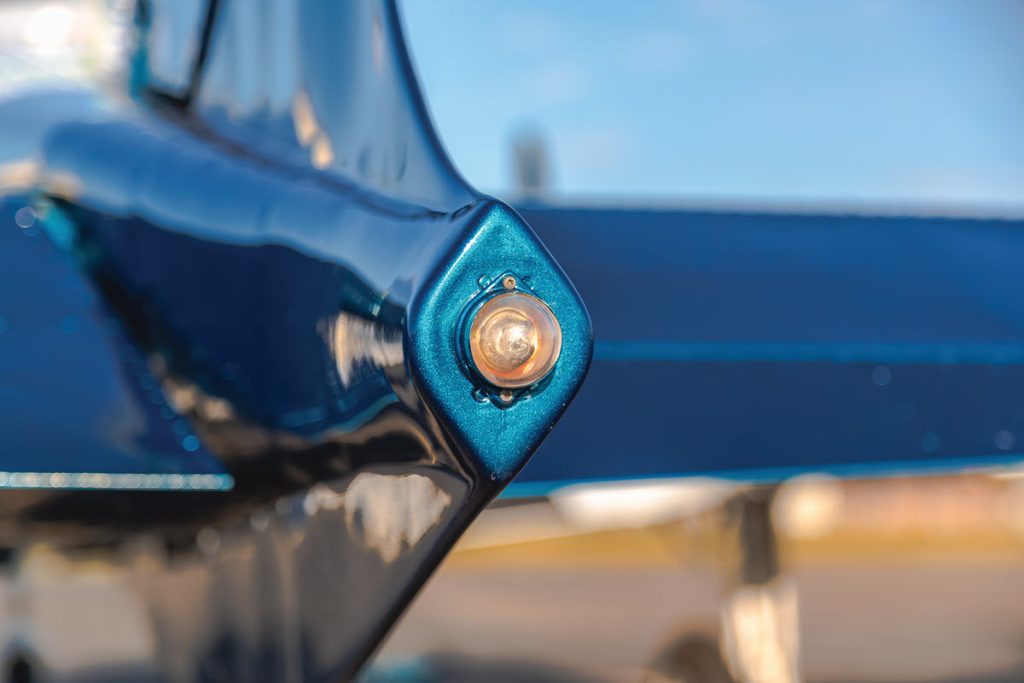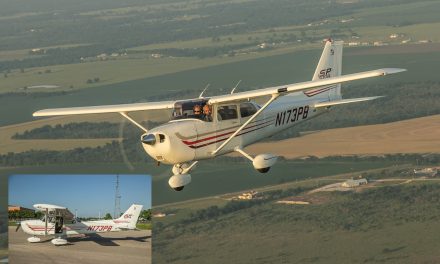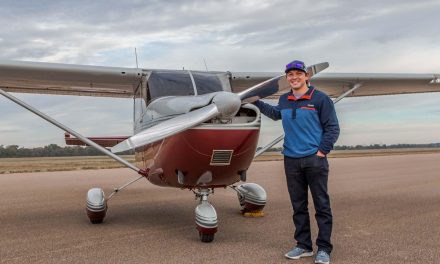
By Stephanie Finnegan
Patrick Johnson’s Sleek 1973 T310Q Turns Heads
During his formative years in “P-burg,” Patrick recollected, “Toledo Airport was a reliever airport for Detroit. Today, they still have the Air National Guard F-16 base there, and now maybe one or two airline flights. It’s definitely not what it used to be, though.” Back in the 1990s, the proximity and the allure of the aviation hub helped color the teen’s career aspirations.
“I originally wanted to be an airliner pilot; however, 9/11 happened, and while flying the big jets dream had been dashed for the time being, I still went on to get all my certifications up to CFI. I finished my commercial and CFI in 2004. I never really did any professional flying, just putzing around. I currently have 760 hours.”
Plain Spoken About Plane Dilemmas
Patrick is wild about his current aircraft. “It’s my forever plane,” he said. But he actually had two other planes before discovering the Cessna T310Q. Each of his prior “involvements” helped him learn what he wanted and needed in a long-lasting aviation relationship. “N881PJ is my third aircraft. My first was a 1963 Cessna 210C, and I owned it with a good friend of mine who lived in Chicago. I would use it in the winter, since I lived in Mississippi, and he would use it in the summer, when it was too hot here,” Patrick explained. “Interestingly, it was serial number 21058086, which was the very first ‘C’ model. I tried to get a few extra dollars out of the trade-in because of that. They didn’t budge, unfortunately.” His second aircraft was a Piper Navajo CR. Patrick credits this encounter with teaching him the importance of personally visiting, sitting in, and inspecting a plane before buying it: “I bought it sight unseen and based on a pre-buy inspection. Nothing was mechanically wrong with the airplane; I was just too tall and big to fit in the cockpit! I later found out that the CR model’s wing spar is several inches forward when compared to the Chieftain model. So I wasn’t able to slide the seat back far enough, and my knees were buried into the yoke, which was set much lower than most aircraft I’ve flown. So for a mere $150,000, I had a pretty sweet hangar queen that I could only taxi around the airport!”
Weighing what he did wrong with the Piper purchase and considering a Cessna 310 as his next set of wings, Patrick decided to be proactive. He knew a coworker whose father owned a 310, so he asked if he could do a physical reconnaissance. “I wanted to check it out and see if I could actually fit! He was about my size, so I was pretty sure I would. I got into his 310 and I was like, ‘Holy smokes! Look at all this room!’ So I knew this would be my target airframe to begin my search.”
Love at First Sight
In late spring 2017, Patrick was browsing the controller.com website when he came across Cessna N310KK. Like many folks who dabble in online dating, there is always that bubbling fear of being catfished. Was this plane as good in person as it appeared in photos? “I pretty much swooned over it. As you can see from the panel pics, what wasn’t there to love about it?” he joked.
“The plane was in Bowling Green, Kentucky, so I rented what possibly was the most janky and mechanically questionable rental car in Enterprise’s fleet to drive to BWG and check out my new purchase. Once there, I spoke with the broker/pilot and A&P, who did another quick pre-buy just to make sure it was airworthy for me to take that day. We did a quick two-hour intro flight and then I was off back to Memphis. Dodging hurricane remnants with my fancy new ADS-B weather and active radar made flying so much easier and safer, which was one of the main reasons I wanted to get a twin with ice boots. One pucker moment of ice buildup is enough to convince you to change from no ice protection to boots. It isn’t ice-certified, but it has enough to get you out of trouble.”
When Patrick began his buying process, the plane had around 400 hours on each engine, a new left prop, and a right prop with about 100 hours on it. “A doctor owned it before and had done all the avionics, overhaul, and props about a month before he decided to upgrade to a TBM. I paid $135,000 for it. With $30,000 of it being avionics, and probably another $15,000 to $20,000 in props and newish engines, I asked myself, ‘How could I not?’”
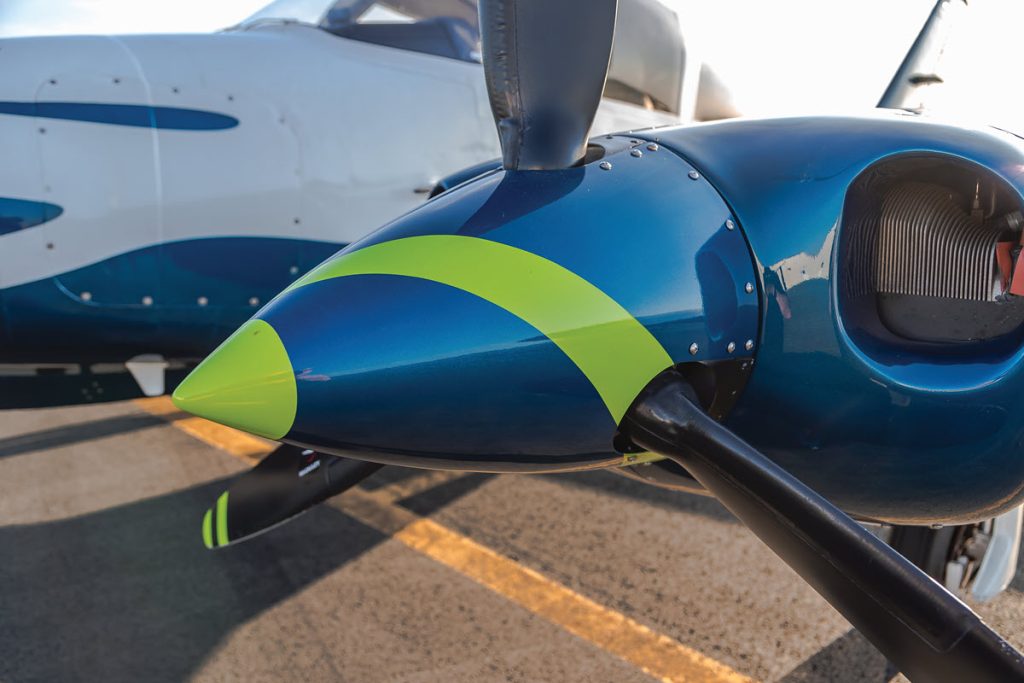
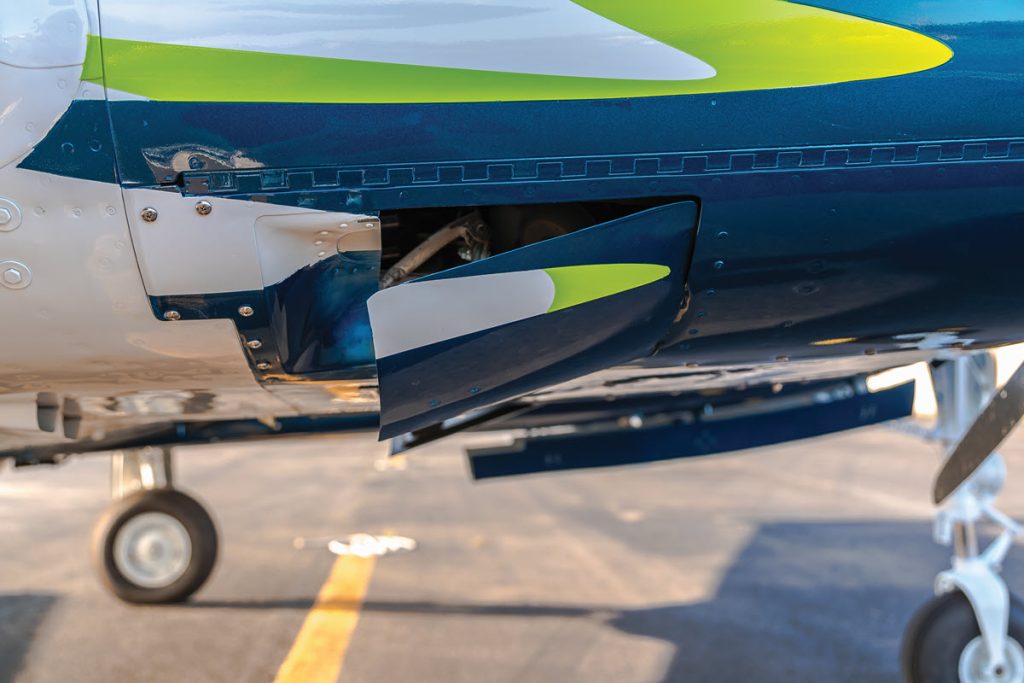
Passing With Flying Colors
Patrick Johnson was savvy when it came to purchasing his 1973 Cessna T310Q. All the avionics had already been upgraded, but he understood it desperately needed a new coat of paint. “It definitely had a 1,000-yard paint job. It wasn’t terrible, but it looked like it was 40 years old. I went to Hawk Aircraft in Zephyrhills, Florida, on a suggestion from another 310 owner who has a YouTube channel. He got his 310 painted and it looked sharp. Hawk suggested I use Scheme Designers, as they have a good relationship with them, and they make it easy to take a design from concept to reality. I told the designer I didn’t want the normal two-tone paint design with a boring stripe. I wanted something with pizzazz and something that would stand out on the ramp.
“I also mentioned that I wanted the paint to flow with the aircraft to make it look like it was going fast just sitting there, kind of like a Citation X on the ramp going Mach .99. They sent a few iterations, and they were okay, but I gave the suggestion of making it look like I flew through a wall of paint. That clicked a light bulb off in the designer’s head and he sent over the current design. I didn’t even give him a chance to explain, I said Yes!”
Making It Official and Changing the Plane’s Name
The 1973 Cessna proved to be as advertised, and then some. Studying the online photos, and deciding whether he should take the gamble, Patrick followed his gut, and his instincts rewarded him. “The pictures of the brand-new Aspen 1000 Pro PFD, Garmin 750/650 stack, and JPI EDM was enough to get me super interested. Add in the 1/4-life engines and newish props and I knew this plane was ready for the future and was getting into its prime, mechanically speaking,” Patrick said.
Recognizing the old mantra that “looks can change and fade,” Patrick was wisely more interested in the “bones of the aircraft and making sure they were in good shape. The broker mentioned that the aircraft was kept in a hangar, and the pre-buy didn’t show any bad corrosion. There was some, as would be expected, but it was mostly skin panels and easily fixed.”
Since Patrick knew that N310KK was a perfect match for his lifestyle, he decided it needed a name change. “The old tail number, N310KK, was kind of blah and boring. I went to the FAA tail number search and entered my birthday and my initials, and to my surprise, 881PJ was available. I reserved it as quickly as possible. Now there’s no mistake; she’s my bird.”
A Dating Wingman
It’s fitting that Patrick’s airplanes helped to play a role in the courtship of his wife, Kate. Before they were married, the couple was separated by many, many miles. Patrick didn’t let the geographical distance stand in his way. “When we started dating online, she was in Huntsville, Alabama, and I was in Memphis. For our first meeting, I had the 210 and flew to Huntsville. Afterward, I found out her friend was bragging for her at work. Apparently, another coworker had been boasting about her date driving up from Birmingham, and Kate’s friend said, ‘Oh, yeah, well, Kate’s date flew himself from Memphis!’ Our second date was memorable, however, in that nothing went to plan,” Patrick recounted.
Inspired by having watched the Masters Golf Tournament on TV, Patrick envisioned a bold, romantic gesture: “I had planned on flying to Augusta, Georgia, because it looked cool. Long story short, I was like two hours late, forgot the time zone change, and the wind was stronger than planned. Landing about four hours after our dinner reservation, we ended up eating at a late-night Mexican restaurant, which is good because she likes Mexican. It started our hashtag trend we call ‘the series of misadventures’ (#theseriesofmisadventures).”
Despite that goof-up, the two clicked, and Kate is Patrick’s frequent passenger and life partner. “While she doesn’t like the turbulence, she generally enjoys going flying with me. I’ve tried to teach Kate how to fly, but she says nope because I am the pilot. Someday I will get her to fly, or at least land.”
1973 Cessna T310Q
All specifications and performance figures are drawn from official sources, often the aircraft flight manual or the manufacturer’s web site. Another reliable source of information is Jane’s All-the-World’s Aircraft. Specifications on older aircraft will not always agree, as several sources may conflict on performance.
| Engine(s) – make/model | Cont. TSIO-520B |
| Hp | 285 |
| TBO (hrs) | 1,400 |
| Fuel type | 100LL |
| Landing gear type | Retr/Tri |
| Max TO weight (lbs) | 5,500 |
| Empty weight (lbs) | 3,302 |
| Useful load – std (lbs) | 1,800 |
| Usable fuel – std (gal/lbs) | 140/840 |
| Payload – full std fuel (lbs) | 960 |
| Wingspan | 36″ 11″ |
| Overall length | 29′ 3″ |
| Height | 10′ 6″ |
| Wing area (sq ft) | 179 |
| Wing loading (lbs/sq ft) | 30.7 |
| Power loading (lbs/hp) | 9.65 |
| Seating capacity | 6 |
| Cabin doors | 1 |
| Cabin width | 48 |
| Cabin height | 47 |
| Cruise speed (kts – 75%) | 225 |
| Cruise Fuel Burn (gph/lbs) | 35/210 |
| Best rate of climb, SL (fpm) | 1,790 |
| Single engine climb (fpm) | 408 |
| Service Ceiling (ft) | 28,200 |
| Service Ceiling (SE – ft) | 17,550 |
| Stall (Vso – kts) | 68 |
| TO over 50 ft (ft) | 1,002 |
| Ldg over 50 ft (ft) | 1,790 |
Two Wings Can Save Four-Legged Friends
The married pair has a busy and rewarding life together. Kate, who recently received her PhD in Counselor Education and Supervision, is set to begin her first university teaching job. Patrick is unabashedly proud of her achievements. He and his wife set aside time in their busy schedule to enjoy the plane and its mobility. They have also tried to include their furry kids, who aren’t big fans of leaving the ground. “We have two dogs that act like children. The older one, Presley, couldn’t care less about flying, and Flopsy, the younger one, will hide between our seats. She doesn’t care too much for it.”
Because Patrick has a tender heart when it comes to pups, he frequently participated in a shelter-animal rescue program. “When gas was much cheaper, I would regularly fly for Pilots N Paws. This organization takes animals (any kind) from places with kill shelters and helps transport them to either no-kill shelters or forever homes across the country. Most of the flights I did for them were huskies from Texas to the Northeast. I would pick up the leg from Arkansas to Ohio regularly. Unfortunately, with gas at $5 per gallon or more, dropping $700 hurts quite a bit more and has reduced my flying altogether.”
Why Patrick Is So High on 881PJ
Coming up on seven years of owning 881PJ, Patrick has exhibited no signs of the often-rumored seven-year itch. He’s still enamored with it and has no plans on trading it in. “Being turbocharged, it has a little more giddy-up-n-go than other planes I’ve flown. Calling it the Porsche of the sky isn’t too far off. If I put the hammer down, that thing will go fast, but then I see the fuel flow and have a mini heart attack. It flies like a solid airframe, like every other Cessna I’ve flown. It feels heavy and light at the same time, if that makes any sense. I can fly it with a finger and thumb, but it doesn’t feel like if I barely brush the controls that it will pitch or roll like a paper plane.”
Patrick acknowledged that the 310 has a reputation for being a difficult plane to fly: “Supposedly it is less forgiving than others. As long as you fly it by the book, it flies rather well on one engine. With the turbo, I was still able to climb from 4,000 to 8,000 feet, at around 300 to 400 fpm on one engine. One thing I can say is that you must respect the power it has, especially when you are do ing something unfamiliar, such as a go-around. Make sure you add power smoothly and not all at once. Add enough to arrest the descent and start a slight climb, and then clean the plane up and you’ll be good to go. This plane is solid, and I love it.”
The Importance of Family Support and a Realistic Assessment of Plane Ownership
“Throughout my early days of flight training, my parents supported me both financially and mentally. This allowed me to focus on flying and do the best I could. My cousin, who is a captain for Southwest, was an inspiration as well. Now that I’m married, Kate is a great supporter of my love for all things aviation and finds it funny/cute every time I geek out about airplanes,” Patrick said. He is grateful for having these folks in his corner, but he also stresses that owning a plane is a major milestone, and a person has to be certain that he or she is up for the undertaking.
“Owning a plane is no small feat, and don’t let anyone tell you different. But that is not a good reason to not own one. If you plan accordingly and don’t spend beyond your means, depending on the market, you can find an exceptional aircraft for a great price. Look for something that fits your current mission. Are you looking to just build time? Are you wanting to take weekend trips with a family of four or less? Are you wanting to fly across the country day/ night VFR/IFR? Find what fits your goals and leaves room for you to grow a little bit. Don’t buy a fixer-upper unless you’re an A&P or have a large sum of disposable income.”
Musing on his first plane purchase, Patrick can still channel the anxiety and jitters he first felt but quickly overcame. “I was scared as hell buying the 210, but when I got the keys in my hand, and I started it up knowing that it was mine (and my buddy’s), it was like soloing all over again. What a great feeling! I would do it again in a heartbeat. Two more times, actually.”
RESOURCES
Painting Design and Templates
Scheme Designers
schemedesigners.com
Paint
Hawk Aircraft
Joe Dinolfo, owner
hawkaircraft.com
Airplane Covers
Bruce’s Custom Covers
aircraftcovers.com
The Upgrades
Here are the upgrades for the 1973 Cessna T310Q N881PJ that Patrick oversaw, with his comments and explanations:
Paint
“Even though the paint was expensive, I treat it like an investment in the longevity of the airframe as a whole. I think of it like sunscreen to protect the skin and internal components from the elements. With the paint lasting 40 years on the previous paint job, I think $1,000 per year is a pretty good cost for probably four times the return in protection and longevity. And the color choices, contrary to popular opinion, are not based on the Seattle Seahawks. I am a Bengals fan and my wife, Kate, is a Steelers fan, so we’re a house divided! But anyhow, the blue is the closest I could get to my Mustang’s Deep Impact Blue and the green is Kate’s favorite color.”
Vortex Generators
“I added vortex generators (VGs) to it as well. Holly Springs, Mississippi (M41), is a pretty short runway when it’s hot and I’m at max gross. US 78 comes up on you really quick, so having the added performance that VGs provide at lower speeds helps me lift off a tad sooner and adds a little extra safety. Now I don’t have to time my takeoff to go between semis on US 78 — not really. The VGs were solely to help the short-field performance, to help give me a little more safety buffer in the hot Southern summer days.”
Custom Airplane Cover
“Sans the paint job, being a turbo Q model with a radar caused issues when I was ordering the custom covers for it. They had a basic pattern for the 310, but because I had a radar and turbo model, the pitots are on the side of the nose and the nose is rounded, not pointy. The dimensions are quite a bit different than a nonturbo no-radar 310Q. So they had to reinvent the template with mine, but the covers are worth every penny.”
GAMI Injectors (The Next Planned Upgrade)
“My next upgrade I want to do further helps performance, and now that avgas isn’t getting cheaper, it will help reduce fuel burn. On winter days, I can lean it out to about 60% power and 14.5 to 15 gph per side. On hot summer days, I have to keep it rich at 60% and 17 gph to keep the cylinders cool. I want to get some GAMI injectors that will help bring that fuel burn down a few gph per side. The 210 had the same Continental IO-520 (just not turbocharged) with GAMIs and I could get that down to 10 gph at 65%. Granted, with the turbos I think I could probably get to 12 to 13 gph with no issue. With the shortage of cylinders, I have started to pay more attention to temperatures and set power according to head temps rather than predetermined power settings.”
A Word of Thanks
Holly Springs is a nice, quiet little airport. Its manager is a retired air traffic controller who worked at Memphis Center, like I do, so that helped build a good relationship.
We have an on-site A&P/IA and an engine shop. John Jewell is well-known in the aviation community, so it is nice to have a good-quality motor shop and a great A&P, like Glen “Buddy” Wilson Jr., to talk airplanes and shop with. Buddy is the best A&P ever!
Select a photo to open a pop-up slide show
